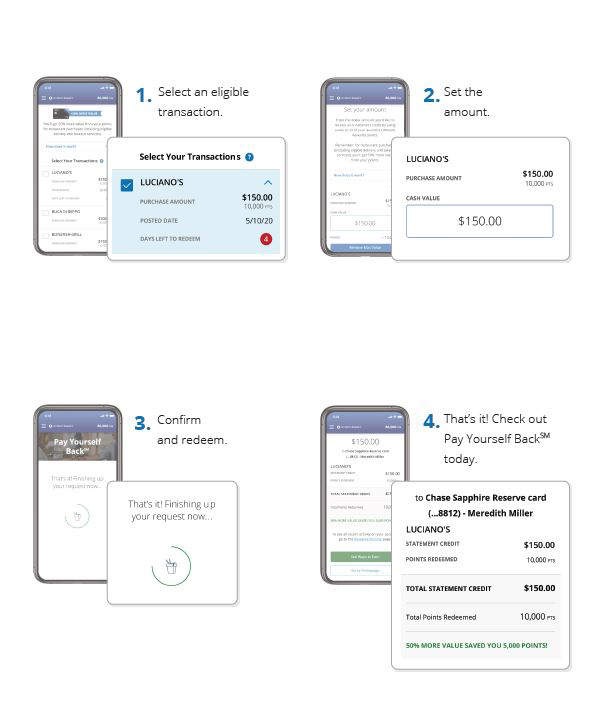There is only a month left until the tax day–the deadline to file and pay your 2019 federal income taxes is July 15th–and this article is an ultimate guide to tax deductions and credits in 2020 you need to know about. Make use of it and keep more of your hard-earned cash in your own pocket.
I shall never use profanity except in discussing house rent and taxes.
—Europe and Elsewhere by Mark Twain, 1923
What’s the Difference Between Tax Deduction and Tax Credit?
Tax deduction is any expense that can be used to reduce your taxable income. For example, if your gross income is $75,000 and you have $15,000 in various tax deductions, you can reduce your taxable income to $60,000.
Tax credit directly reduces the amount of tax you owe the IRS. It’s applied to your tax bill after your federal income tax has been calculated.
For example, a $1,000 deduction will save you $220 if you fall into the 22% tax bracket. Whereas a $1000 tax credit will cut your taxes amount by $1,000.
Standard Tax Deduction vs Itemized Tax Deductions
With tax deductions, you have a choice: take the standard deduction or itemize your deductions. To itemize your deductions you would first need to figure out what your deductible expenses are–listed below for your convenience are expenses that qualify for deduction –and then add them all together. The standard deduction is a fixed amount that taxpayers can subtract from the income, regardless of how many deductible expenses they incurred. You can choose either one.
2019 Standard Deduction
- Married filing jointly — $24,400
- Head of household — $18,350
- Single — $12,200
- Married filing separately — $12,200
2020 Itemized Deductions Include
1. Mortgage interest
- You can deduct mortgage interest on up to $750,000 in principal
- The debt must be “qualified personal residence debt,” which generally means the mortgage is backed by either a primary residence, second/vacation home, or by home equity debt that was used to substantially improve one of these residences
Not eligible for the mortgage interest deduction:
-
- Investment property mortgages, although mortgage interest can be used to reduce taxable rental income
- Home equity debt that was incurred for any other reason than making improvements to your home
2. Charitable contributions
- Deductible up to 60% of your adjusted gross income (AGI). Some organizations have lower limits: up to 30% for contributions to veterans organizations, certain private nonprofit foundations, fraternal societies, and nonprofit cemeteries, and only up to 20% of appreciated capital gains on donated items
- Only tax-deductible if they are made to a qualified tax-exempt organization. Churches, volunteer fire departments, and organizations with 501(c)(3) status all qualify
- Your donation must be in the form of cash, stocks and bonds, or property (deduct the fair market value for the item, not the cost you paid for it) in order to deduct it from your taxes
The charitable donation deduction is determined by who you give the money to, not by the cause you contributed to, thus donations to for-profit companies, individuals, and political organizations do not count.
You can use the IRS’ Tax-Exempt Organization Search tool to double check if your charitable donation qualifies or not.
3. Medical expenses
- Only to the extent by which they exceed 10% of your AGI
How to calculate: If your AGI is $80,000 in 2020 and your qualified medical expenses for the year are $10,000. 10% of your AGI would be $8,000, you can deduct the portion of your medical expenses that exceeds this amount — $2,000.
4. State and local taxes (SALT)
-If you paid property taxes on real estate, a car, or any other personal property, it can be included as part of the SALT deduction
-You can choose to deduct your state and local income taxes OR your state and local sales taxes. In most cases the state income tax deduction is more beneficial. If you’re a lucky one who lives in a state that doesn’t have an income tax, then deducting state and local sales taxes will yield the largest benefits
-The SALT deduction is limited to a total of $10,000 per return, per year
If the total is at least close to your standard deduction, it’s worth calculating your itemized deductions to see which method is more beneficial for you.
5. Traditional IRA deduction
-For the 2019 and 2020 tax years, the traditional IRA contribution limit is $6,000 per person, with an additional $1,000 catch-up contribution allowed for individuals who are 50 years old or older
-There is an income restriction for taxpayers who are also covered by a retirement plan at work, or whose spouses are. The IRS publishes the income limitations each year
6. Deduction for health savings account (HSA) or flexible spending account (FSA) to help cover healthcare expenses
-The HSA is more beneficial. Eligible individuals can contribute to an account and money in the account can be rolled over from year to year. FSA only allows for up to $500 to carry over from year to year
-HSA contributions can be invested, similarly to money in a 401(k)
-HSA has a unique double tax benefit — contributions are tax-deductible and withdrawals used for qualifying medical expenses are tax-free, even if your account has earnings from investment returns
7. Student loan interest deduction
-Up to $2,500 in student loan interest per year. The loan(s) must be in your name. Married filing separately don’t qualify
-For married couples who both have qualifying loans, the $2,500 limit is per return, not per person. Thus only up to $2,500 for single taxpayers or married couples
8. Teacher classroom expenses
-Full-time teachers who work in K-12 education can deduct up to $250 in out-of-pocket classroom expenses, if filing a joint return and both spouses are teachers — $500
9. Self-employed tax deductions
-The Tax Cuts and Jobs Act created a Qualified Business Income deduction (the pass-through deduction), which allows most self-employed taxpayers to deduct 20% of their income
-The home office deduction applies if part of your home is used exclusively for business purposes
-While self-employed individuals are required to pay both the employer and employee portions of Social Security and Medicare taxes (a.k.a. the self-employment tax), 50% of this tax is deductible as a business expense
-Access to several unique retirement plans with higher contribution limits than IRAs (SIMPLE IRAs, SEP-IRAs, and solo 401(k)s)
-Travel expenses, office supplies, advertising expenses, and mileage driven for business purposes are deductible
10. Alimony deduction
-Alimony payments that resulted from pre-2018 divorces are deductible as an adjustment to income
-Alimony deduction was eliminated as part of the Tax Cuts and Jobs Act in the cases of new divorces.
11. Moving expense deduction is now available for armed forces only.
12. Investment losses deduction
-Investment losses can be used to reduce capital gains from other investments. Short-term losses must be used to offset any short-term gains first. The same rule applies to long-term investment losses. Any extras can be used to reduce other capital gains
-If your investment losses exceed your capital gains for the year, you can use the excess to reduce your other taxable income, up to a $3,000 maximum. Any excess losses can be carried over to the following tax year
13. Business expenses deduction for performing artists
Low-income performing artists can deduct certain business expenses, such as costs necessary to complete a rehearsal. To qualify, you must have an AGI of $16,000 or less; your business expenses must have been at least 10% of your gross income; you must have worked as a performing artist for multiple employers; and each employer must have paid at least $200.
14. Early withdrawal penalties from a CD
If you paid any early withdrawal penalties for a savings account (certificate of deposit), you can deduct that penalty on your federal taxes.
15. Deduction for personal property rental
If you don’t work in a line of business that involves renting out your personal property, but you still earn some side income from renting out your property, you can deduct expenses related to that rental income.
16. Deduction for whistleblower fees
This deduction is an incentive to help taxpayers detect and alert the IRS to tax law violations. The deduction can cover attorney fees and court costs you paid in connection with helping the IRS. To claim the deduction, you must have received an award from the IRS (a.k.a. whistleblower award).
17. Mileage reimbursement deduction
If you have to drive for work and your employer doesn’t reimburse your expenses for fuel, you can deduct 58 cents per mile by using the mileage reimbursement deduction. The deduction might also cover your car insurance, parking, and maintenance costs. Your expenses must exceed 2% of your AGI in order to qualify.
Now let’s take a look at tax credits
Earned Income Tax Credit: Income Limits and Maximum Credit Amounts
Earned Income Tax Credit is one of the most sizable tax credits. It was established back in 1975 in order to offset the burden of Social Security taxes and to provide an incentive to work.
Earned Income Tax Credit eligibility:
- A person must be at least 25 years old and younger than 65 to qualify.
- If married, both spouses must have valid Social Security numbers and must have lived in the country for more than six months
- If you may be claimed as a dependent on another filer’s tax return, you do not qualify.
Qualifying Children Claimed
| If filing | Zero | One | Two | Three |
| Single, Head of Household, or Widowed | $15,570 | $41,094 | $46,703 | $50,162 |
| Married Filing Jointly | $21,370 | $46,884 | $52,493 | $55,952
|
Investment Income Limit
Investment income must be $3,600 or less for the year.
Maximum Credit Amounts
The maximum amount of credit for Tax Year 2019 (current tax year) is:
- $6,557 with three or more qualifying children
- $5,828 with two qualifying children
- $3,526 with one qualifying child
- $529 with no qualifying children
The American opportunity tax credit (AOTC)
A credit worth up to $2,500 annually per student is available for those with higher education expenses
- The AOTC is available for qualified education expenses: college tuition, fees you are required to pay in order to enroll in a course or program, books, classroom supplies and equipment
- You can claim the AOTC for the student’s first four years of higher education. You don’t need to complete all four years consecutively, but a taxpayer can only claim the credit on four separate income tax returns. The four-year limit includes any years you claimed the Hope credit, a previous version of the AOTC.
- Your income must be within the income limits to qualify: $180,000 for joint filers and $90,000 for all others
Room and board costs, transportation, or medical expenses don’t qualify for this tax credit.
Lifetime Learning Credit
The Lifetime Learning Credit was established to offset the costs of post-secondary education and is available for any year of post-secondary education, not just the first four. This tax credit is available for people not pursuing a degree as well.
- The Lifetime Learning Credit may be as high as 20% of up to $10,000 in eligible costs or $2,000 per eligible student. You can include the cost of tuition, fees and any books or supplies you are required to purchase directly from the school, if it’s a condition of enrollment. If you can enroll without this books and supplies, these costs don’t qualify
- For 2019 the full credit is available to eligible individual taxpayers who make $58,000 or less, or married couples filing jointly who make $116,000 or less
- The credit phases out as income goes beyond these amounts.
Child and Dependent Care Credit
The Child and Dependent Care Credit provides up to 35% of qualifying expenses, depending on AGI. The child and dependent care credit gets smaller at higher incomes, but it doesn’t disappear.
This credit is available to single, married filing jointly, qualifying widow or widower with a qualifying child, or head of household who must pay for childcare for dependents under age 13 in order to work or look for work. The credit is also available for the cost you might accrue while caring for a spouse or a dependent of any age who is physically or mentally incapable of self-care and has lived in your home for at least half the year.
Eligibility
- To qualify for the child and dependent care credit, you must have paid someone, such as a daycare provider and not:
- Your spouse
- A parent of the child being cared for. For example, your ex-husband or ex-wife
- Anyone listed as a dependent on your tax return
- Your own child age 18 or younger, regardless of whether he or she is a dependent on your tax return
- You (and your spouse, if you’re married) must have “earned income,” meaning money earned from a job. Non-work income, such as investment profits, doesn’t count.
- You must have paid for the care so that you could work or look for work. Being a full-time student or a parent unable to care for themself does count as “working” for the purposes of the credit, even if you don’t receive any income for it.
- If you are married, you must file a joint tax return.
- You must provide the name, address and Taxpayer Identification Number (TIN) of the person who provided the care. The taxpayer ID number is either a Social Security number (SSN) or an Employer Identification Number (EIN).
The size of your credit is based on how much you spend for child and dependent care, as well as your income, in general, it works like this:
- Add up the total amount of your care expenses that qualify for the credit. The maximum amount of care expenses you’re allowed to claim is $3,000 for one person, or $6,000 for two or more people.
- If your employer gives you money to pay child care expenses, or if you have money withheld from your pay on a pre-tax basis, you must subtract this money received from your allowable expenses.
- Compare your claimed expenses with your earned income and, if you’re married, your spouse’s earned income. Take the smallest of all these amounts. These are your “allowable expenses.”
- Your credit is a percentage of your allowable expenses. That percentage ranges from 20% to 35%. The higher your income, the smaller your percentage, and therefore the smaller your credit. There is no upper limit on income for claiming the credit.
Savers Tax Credit
Formerly the Retirement Savings Contributions Credit is a tax break to low- and moderate-income taxpayers who are saving for retirement. The credit is for eligible contributions to retirement plans, such as qualified investment retirement accounts, 401(k)s and certain other retirement plans.
Taxpayers with the least income qualify for the greatest credit—up to $1,000 for those filing as single, or $2,000 if filing jointly.
- For 2019 the maximum income for the Savers Tax Credit is $32,000 for single filers, $48,000 for heads of household, and $64,000 for those married and filing jointly.
- Filers must be at least 18 years old and may not have been a full-time student during the calendar year or claimed as a dependent on another person’s return.
The Savers Credit can be claimed for your contributions to a:
- 401k,
- 403(b),
- 457 plan,
- Simple IRA, or
- SEP IRA.
Foreign tax credit
If you cannot take the itemized deduction for foreign taxes you paid, you may still be able to get a credit for those payments. You can generally claim the credit if you paid income tax of at least $300 during the year to either a foreign country or a U.S. territory.
Adoption credit
New parents can qualify for a tax credit worth $14,080 in adoption costs per child. The value of the credit begins to phase out once your income reaches $211,160 and is not available if you make above $251,160.
Residential energy efficient property credit
Taxpayers may be able to claim this tax credit for the cost of installing and using certain types of renewable energy for their home. Eligible energy costs include those for solar electric, solar water heating, fuel cells, wind energy, and geothermal heat pumps.
Nonbusiness energy property credit
This credit is available for certain home improvements you made to your home in order to increase energy efficiency. If you’ve made home improvements like installing insulation to reduce heat loss, got a new furnace or heater, added an electric heat pump to heat water, upgraded a stove to burn biomass fuel to heat your home or water, or even redid your exterior windows or doors. Certain products may need to meet performance or quality standards to qualify, so keep an eye out for that.
Credit for electric plug-in vehicles
You can qualify for a tax credit if you purchased a qualified plug-in electric vehicle during the year for up to $7,500. This is available for electric cars and motorcycles, whether for business or personal use. Form 8936 will help you determine your credit amount.
Probably not a single person enjoys paying taxes. We hope this guide to Tax Deduction and Credits in 2020 will help you keep more of your money in your wallet.









